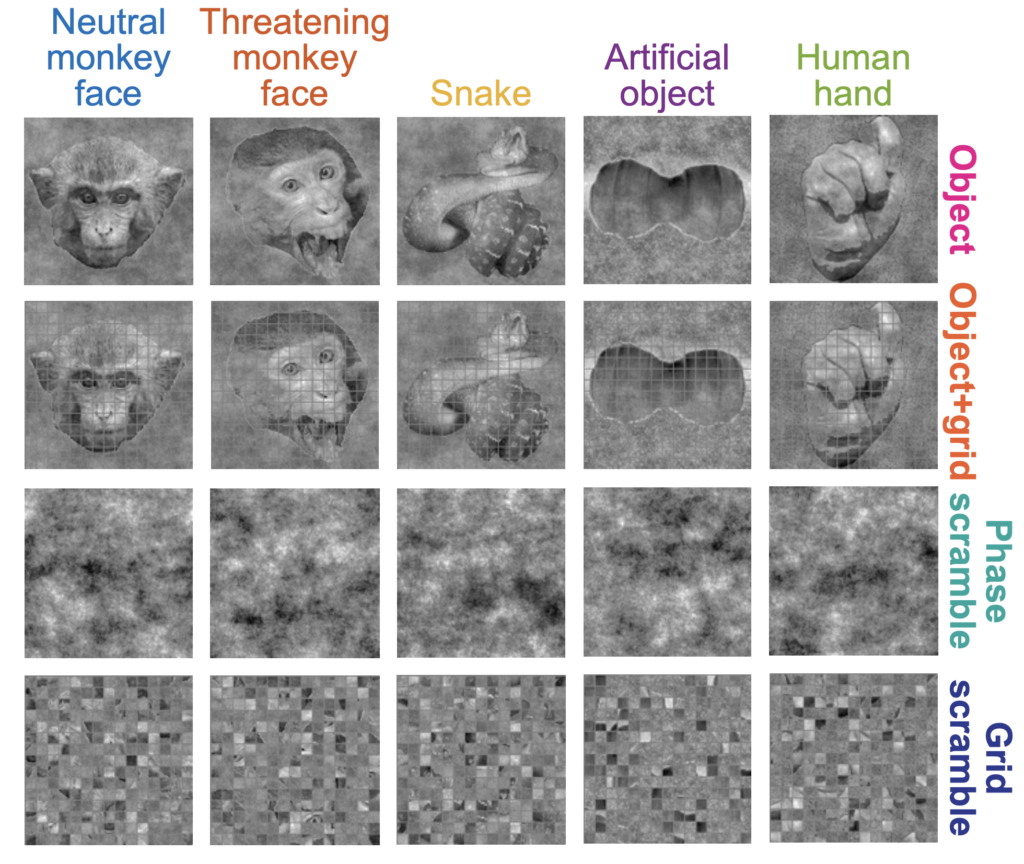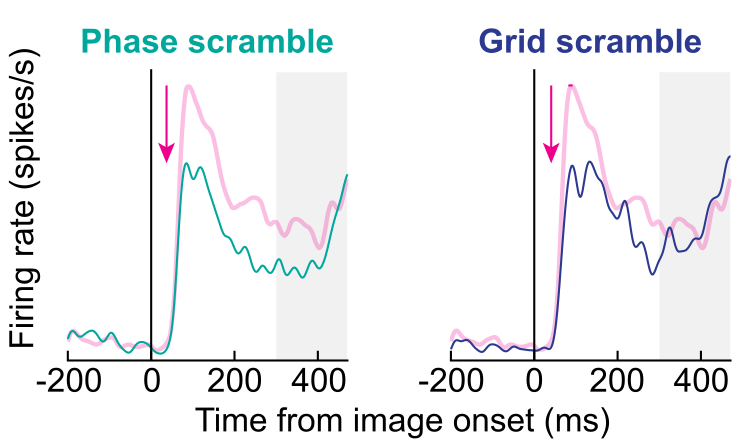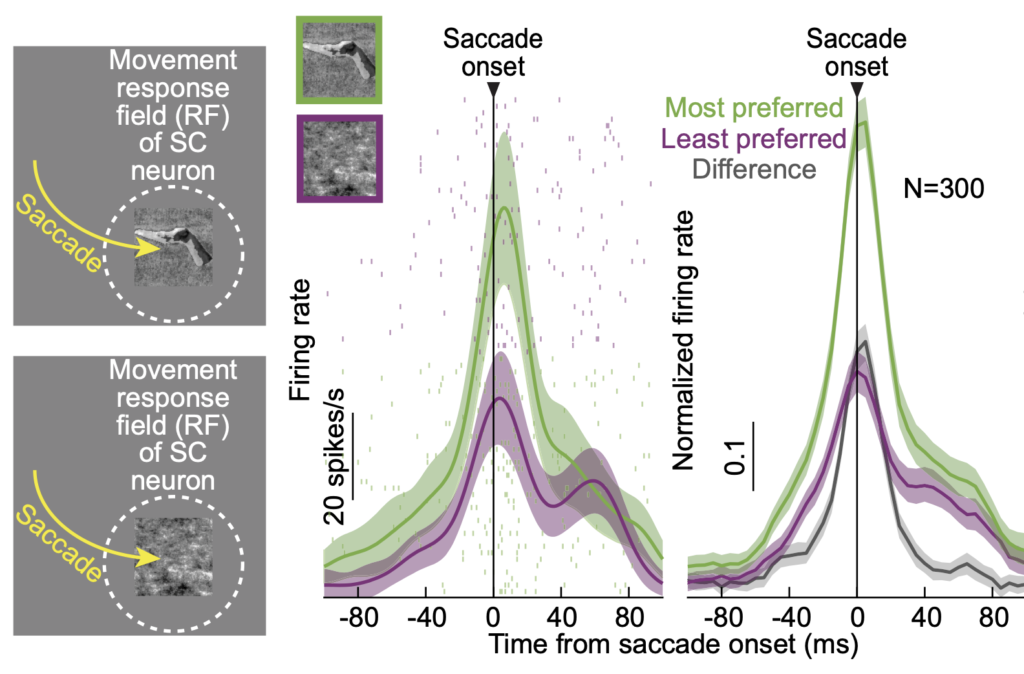We have a new paper just published in Scientific Reports!
In this new paper, we tackled the question of whether superior colliculus (SC) neurons have an ability to detect visual objects in their very initial spiking responses to image onsets (occurring within ~50 ms from presenting a visual stimulus to the eyes).
It has long been known that SC neurons, besides helping move the eyes and body to orient towards eccentric locations, possess brisk visual sensory responses – for a review, see our recent description of this. Intriguingly, it was also suggested that the SC might help detect faces, as part of a subcortical network for rapid detection of conspecifics and/or threats.
However, we might also orient our gaze towards general objects, such as fruits or tools. Therefore, in this most recent study, we explored several different visual object categories, and we investigated how the SC neurons responded to them in their initial visual bursts.

We presented images of different categories, such as human and animal faces or body parts or even snakes. We then recorded extrafoveal SC neuronal activity, and we compared this activity to that evoked by scrambled versions of the same images. The scrambled versions maintained low-level visual features, such as luminance and spatial frequency information. However, they disrupted the “objectness” information of the stimuli. We found that SC neurons systematically preferred to “look” at object images. That is, the very first initial visual responses of SC neurons (starting within approximately 50 ms from image onset) were higher for real object images than for scrambles.

Remarkably, we found this property of SC neuronal responses to also occur in the intermediate and deeper layers. These layers are typically more concerned with shifting gaze than image analysis, with neurons often exhibiting very strong motor bursts at saccade generation. However, when these neurons also possessed visual responses, they still detected objects more briskly than non-object images. In fact, we found that generalized object preference by SC neurons occurred in all functional types that we could classify: as long as a neuron type exhibited visual responses, it also tended to prefer real object images.
We also related the object preference property of SC neurons to our recently observed spatial frequency tuning properties of SC visual responses. We found that such spatial frequency tuning significantly supports the early phases of SC object detection. Later phases in the responses to objects likely emerge through reverberations with cortical processing of the same visual object images.
We think that these results are interesting for at least two reasons.
First, we recently found that task-irrelevant visual forms can very strongly capture orienting responses. That is, the eyes tend to orient much more easily towards object versus non-object images, even when the object images are completely task-irrelevant (i.e. distractors). The express neuronal detection of visual objects that we found in our current study could mediate this behavioral phenomenon. Thus, both the results of the current study in the SC and the behavioral results of the earlier study mean that we can already detect and orient towards visual objects, such as faces, even before the cortical object processing patches in the ventral visual processing stream have completed their analysis of object images!
Second, we recently also found that SC motor bursts embed within them a visual sensory representation. That is, the same saccade to a different image is associated with a different motor burst at the time of saccade generation. In that study, this sensory tuning in the neuronal movement commands of SC neurons was particularly strong for real objects. Thus, beyond allowing early detection of visual objects, embedding object information in the SC can also allow the SC to broadcast this information to other brain areas exactly at the time of saccade generation. We think that this can be part of a predictive system that helps handle the sensory consequences of rapid eyeball rotations.

